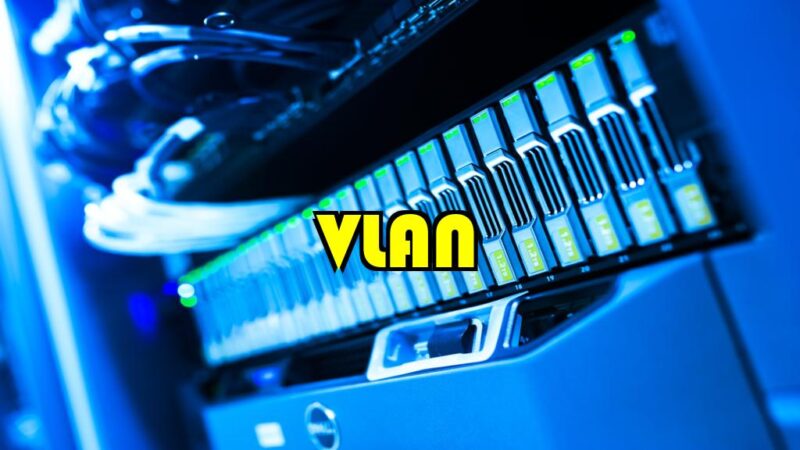Virtual Local Area Networks, or VLANs, are tools for optimizing network efficiency, security, and management. In this article, we’ll give an answer to the question “What is a VLAN”, exploring their definition, functionality, benefits, and practical applications.
What is a VLAN?
Defining VLAN:
A VLAN, which stands for Virtual Local Area Network, is a logical network composed of devices from different physical LAN segments. Unlike traditional LANs, VLANs are created based on factors such as department, function, or project rather than physical proximity.
How VLANs Work
Logical Segmentation:
VLANs operate as logically segmented networks within a physical network infrastructure. This segmentation is achieved by assigning specific ports on network switches to a particular VLAN.
Devices in the same VLAN can communicate as if they are on the same physical LAN, regardless of their actual physical location.
Broadcast Domain Isolation:
One key feature of VLANs is the isolation of broadcast domains. In a traditional LAN, broadcasts are shared among all devices, creating potential network congestion.
VLANs confine these broadcasts within their specific VLAN, reducing network traffic and enhancing overall performance.
Benefits of VLANs
Enhanced Security:
VLANs contribute significantly to network security by isolating groups of devices. This segmentation prevents unauthorized access and reduces the attack surface, making it more challenging for malicious actors to compromise the entire network.
Also Read: Secure Your Home Wireless Network for Teleworking
Improved Network Performance:
By reducing broadcast traffic and optimizing data flow, VLANs enhance network performance. This is particularly beneficial in large and complex networks where efficient data transmission is crucial.
Simplified Network Management:
VLANs simplify network management by allowing administrators to control and configure network devices based on logical groupings. This facilitates easier troubleshooting, configuration changes, and overall network maintenance.
Practical Applications
Departmental Segmentation:
In a business environment, VLANs can be deployed to separate departments logically. The finance team, for instance, can be on a VLAN distinct from the marketing team, enhancing both security and efficiency.
Guest Networks:
VLANs are often used to create segregated guest networks. This ensures that guest devices are isolated from the internal network, maintaining security while providing internet access.
Voice and Data Segregation:
In a VoIP (Voice over Internet Protocol) environment, VLANs are used to separate voice and data traffic. This segregation optimizes bandwidth usage and ensures the quality of voice communication.
Implementing VLANs
Configuring VLANs:
Setting up VLANs involves configuring network switches to recognize and separate traffic based on VLAN identifiers. VLAN membership is typically defined by assigning specific switch ports to a particular VLAN.
Router Configuration:
For VLANs to communicate with each other, a router is required. Routers with VLAN support can route traffic between different VLANs, enabling inter-VLAN communication.
Challenges and Best Practices
Potential Challenges:
While VLANs offer numerous advantages, improper configuration or network changes can lead to issues such as VLAN hopping or misconfigurations. Regular audits and adherence to best practices help mitigate these challenges.
Best Practices:
- Document VLAN configurations thoroughly.
- Regularly review and update VLAN assignments.
- Implement proper security measures to prevent unauthorized VLAN access.
Conclusion
In this article we gave an answer to the question “What is a VLAN?”. Virtual Local Area Networks are powerful tools that bring flexibility, security, and efficiency to network design and management. Whether used to segregate departments, enhance security, or optimize network performance, VLANs have become a cornerstone of modern networking, providing a dynamic and scalable solution for diverse organizational needs.









